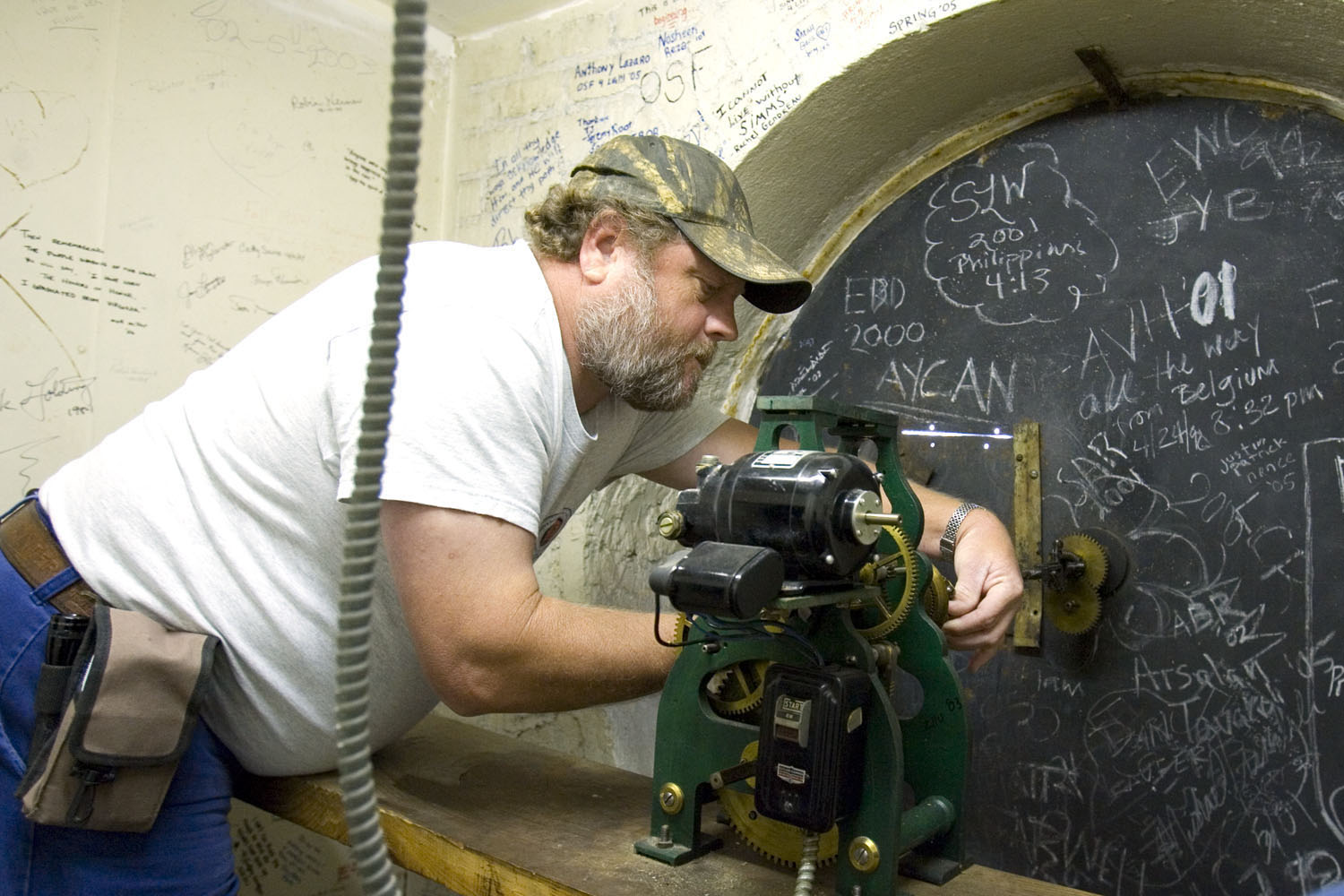Nov.1, 2007 — Most United States residents will set their clocks back an hour this weekend as extended daylight savings time ends Sunday, Nov. 4 at 2 a.m. (or 1 a.m. Eastern Standard Time).
At the University, this is a more complicated task. There are more than 100 electric University clocks on Grounds, which Facilities Management electricians control through about eight master clocks. They only need to change about eight master clocks, which will, in turn, correct all the secondary clocks within the buildings.
The Rotunda clock, however, must be changed by hand, something that will be done Monday morning.
The concept of daylight-savings time was first proposed in 1784 by Benjamin Franklin. In a pamphlet entitled “An Economical Project,” he calculated how much money people would save in candle wax, wicks and lamp oil if they shifted an hour of daylight from the morning to the evening.
In modern times, Daylight Savings Time is supposed to save energy, and extending it by four weeks was part of the Energy Policy Act of 2005.
Paul Crumpler, energy program manager at U.Va.'s Facilities Management division, said he has examined the University's electricity usage for the past year and found that the extension had little or no impact.
At the University, this is a more complicated task. There are more than 100 electric University clocks on Grounds, which Facilities Management electricians control through about eight master clocks. They only need to change about eight master clocks, which will, in turn, correct all the secondary clocks within the buildings.
The Rotunda clock, however, must be changed by hand, something that will be done Monday morning.
The concept of daylight-savings time was first proposed in 1784 by Benjamin Franklin. In a pamphlet entitled “An Economical Project,” he calculated how much money people would save in candle wax, wicks and lamp oil if they shifted an hour of daylight from the morning to the evening.
In modern times, Daylight Savings Time is supposed to save energy, and extending it by four weeks was part of the Energy Policy Act of 2005.
Paul Crumpler, energy program manager at U.Va.'s Facilities Management division, said he has examined the University's electricity usage for the past year and found that the extension had little or no impact.
Media Contact
Article Information
November 1, 2007
/content/end-daylight-savings-time-means-its-time-reset-your-clocks

